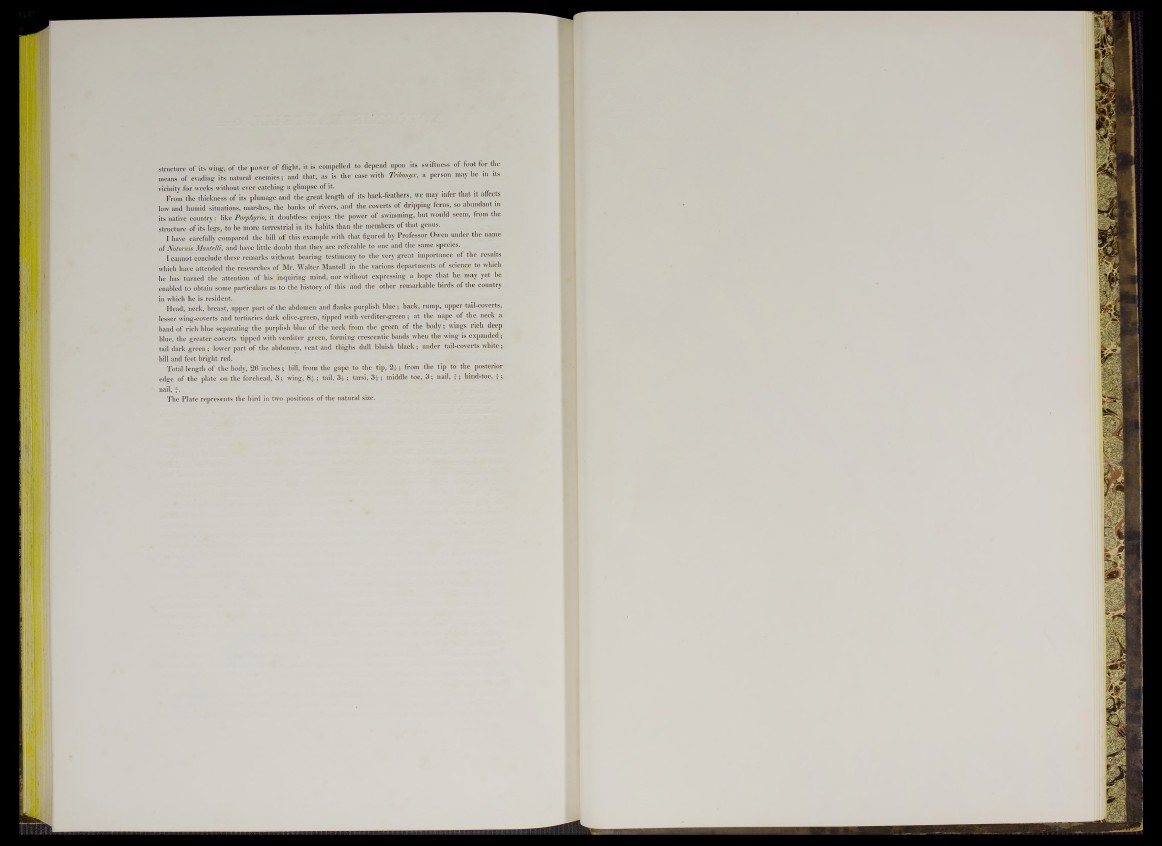
structure of its wing, of the power of flight, it is compelled to depend upon its swiftness of foot for the
means of evading its natural enemies; and that, as is the case with Tribomjx, a person may be in its
vicinity for weeks without ever catching a glimpse of it.
From the thickness of its plumage and the great length of its back-feathers, we may infer that it affects
low and humid situations, marshes, the banks of rivers, and the coverts of dripping ferns, so abundant in
its native country: like Porphyria, it doubtless enjoys the power of swimming, but would seem, from the
structure of its legs, to be more terrestrial in its habits than the members of that genus.
I have carefully compared the bill of this example with that figured by Professor Owen under the name
of Notarrm Mantelli, and have little doubt that they are referable to one and the same species.
I cannot conclude these remarks without bearing testimony to the very great importance of the results
which have attended the researches of Mr. Walter Mantell in the various departments of science to which
he has turned the attention of his inquiring mind, nor without expressing a hope that he may yet be
enabled to obtain some particulars as to the history of this and the other remarkable birds of the country
in which he is resident.
Head, neck, breast, upper part of the abdomen and flanks purplish blue; back, rump, upper tail-coverts,
lesser wing-coverts and tertiaries dark olive-green, tipped with verditer-green; at the nape of the neck a
band of rich blue separating the purplish blue of the neck from the green of the body; wings rich deep
blue, the greater coverts tipped with verditer green, forming crescentic bands when the wing is expanded;
tail dark green ; lower part of the abdomen, vent and thighs dull bluish black 5 under tail-coverts white;
bill and feet bright red.
Total length of the body, 26 inches; bill, from the gape to the tip, 2 k ; from the tip to the posterior
edge of the plate on the forehead, 3 ; wing, St-; tail, 3 k ; tarsi, 3 k : middle toe, 3 : nail, k ; hind-toe, : ;
nail, k.
The Plate represents the bird in two positions of the natural size.